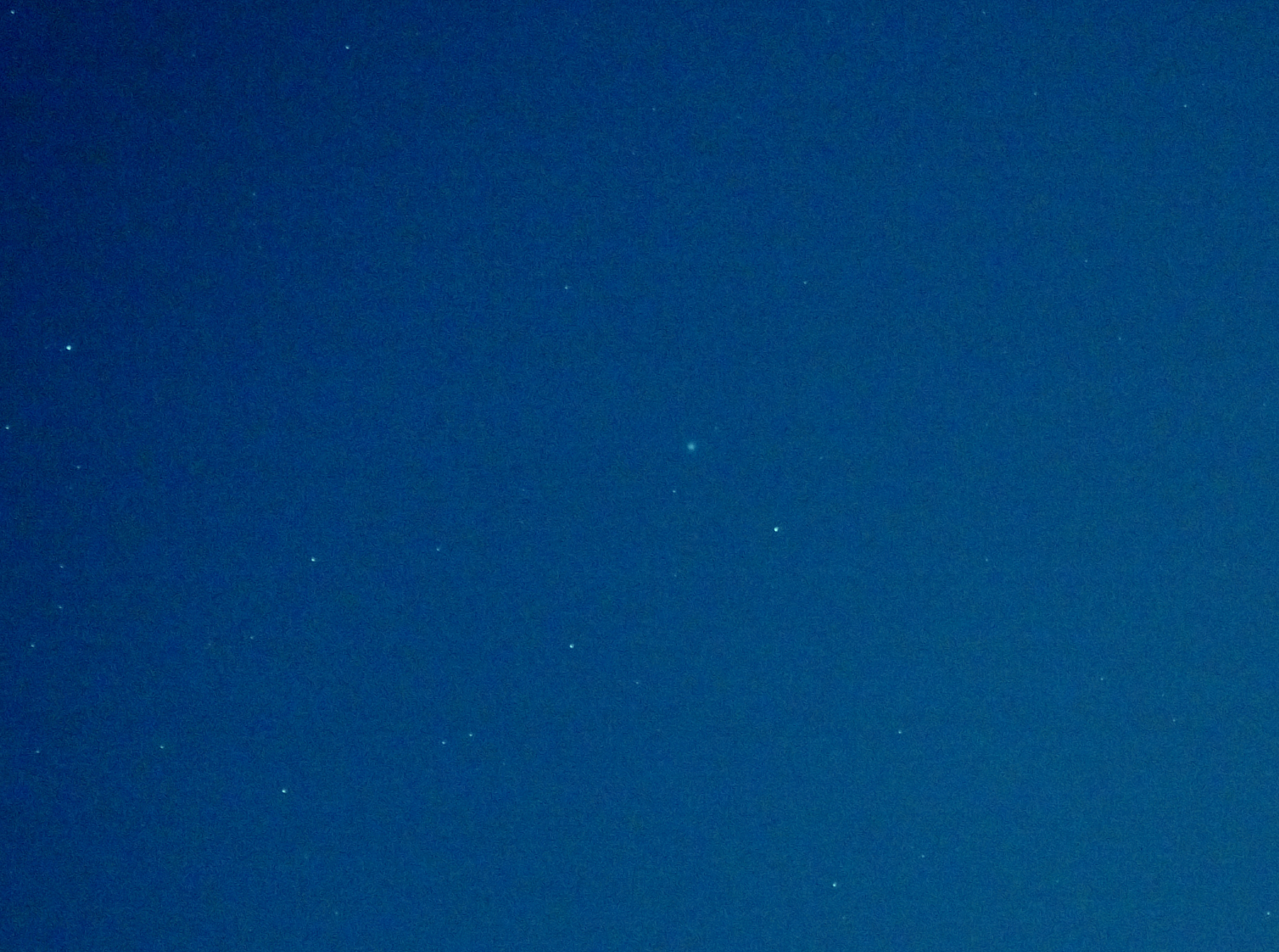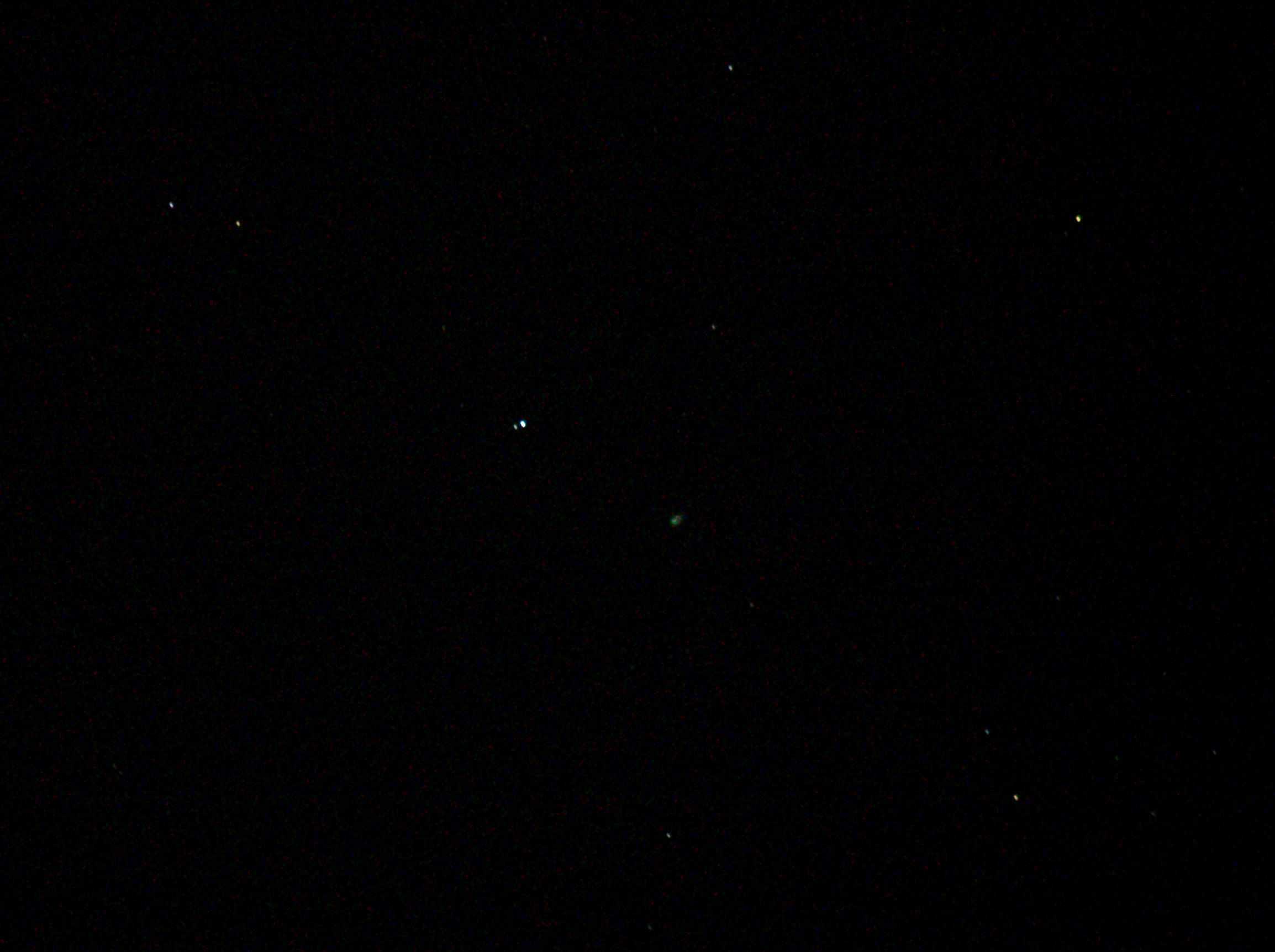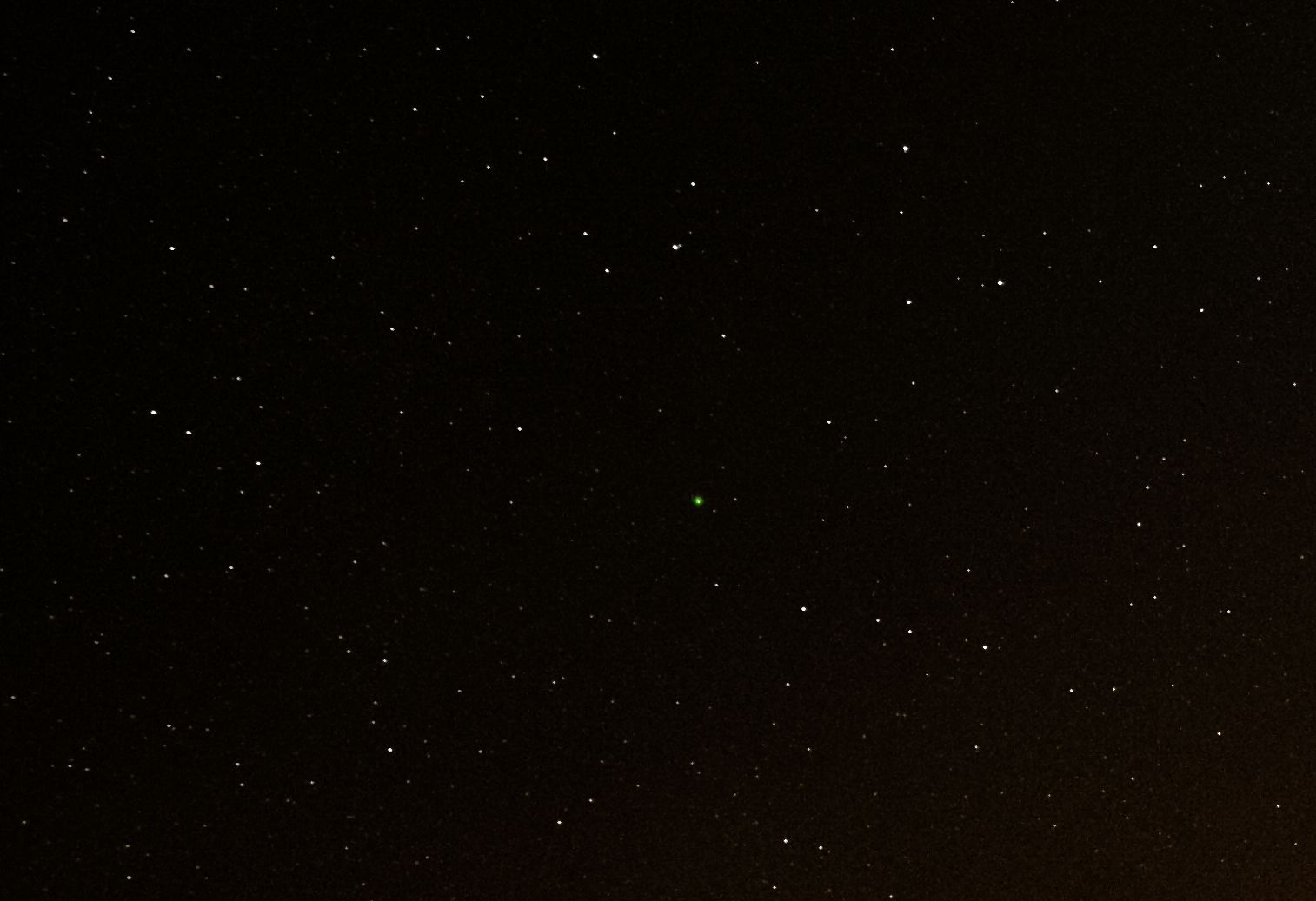Comet C/2006 M4 (SWAN) is a non-periodic comet discovered in late June 2006 by Robert D. Matson of Irvine, California and Michael Mattiazzo of Adelaide, South Australia in publicly available images of the Solar and Heliospheric Observatory (SOHO). These images were captured by the Solar Wind ANisotropies (SWAN) Lyman-alpha all-sky camera on board the SOHO. The comet was officially announced after a ground-based confirmation by Robert McNaught (Siding Spring Survey) on July 12
Although perihelion was Sept 28, 2006, the comet flared dramatically from seventh magnitude to fourth magnitude on October 24, 2006, becoming visible with the naked eye.
Comet C/2006 M4 is in a hyperbolic trajectory (with an osculating eccentricity larger than 1) during its passage through the inner solar system.
After leaving the influence of the planets, the eccentricity will drop
below 1 and it will remain bound to the Solar System as an Oort cloud comet.
Given the extreme orbital eccentricity of this object, different epochs can generate quite different heliocentric unperturbed two-body best-fit solutions to the aphelion distance (maximum distance) of this object. For objects at such high eccentricity, the Suns barycentric coordinates are more stable than heliocentric coordinates. Using JPL Horizons, the barycentric orbital elements for epoch 2013-May-14 generate a semi-major axis of about 1300 AU and a period of about 47,000 years.
The
November 22nd, 2006 Black River Astronomical Society Impromptu Star
Party
I'd like to thank John R
for inviting us all out to last night's
impromptu Star Party. The skies were
fabulous. The milky way and even the dark rift were
easily visible. The sky was steady and seeing was superb.
In
addition to
John & I, Tim H, Lee L, Dave G and Randy B showed up,
and we thoroughly
enjoyed the frigid November skies until even the bravest of
us finally gave in to the
cold and called it a night at about 11pm.
Comet Swan
looked very nice in John's 10". Working together, we opened up the
Nielson Observatory, set up a
digital camera (Canon 30D w/75-300mm lens) on the 14" Celestron and
captured
the
following image of this little emerald jewel minutes
before it sunk into the side of the building and oblivion..........
Here's
a blowup of the Comet. We were all surprised at the large apparent size
and brightness of the comet. It was a bright emerald
green and appeared somewhat oblong and rectangular in shape.
My
2 clear nights in October, 2006
October 8-9th, 2006. 2 nights off and
predicted clear skies !
2 comets in the sky!
2 passes of the ISS!
This promised to be a spectacular observing session.
First, the ISS. Recently NASA added additional solar panels to the ISS
and reports stated that passovers
would be really spectacular. AND THEY WERE !!!
Here's the proof. On the 8th ISS passed thru the Big Dipper at 6:13am

On the 9th ISS passed slowly across the northern horizon at 6:45am
And lastly, my meager images of Comet Swan.

 A wide angle view. Click to enlarge.
A wide angle view. Click to enlarge.

Here's a shot of yours truly set up at Wellington, Ohio enjoying a crisp autumn night and a cup of coffee.

Notes:
My home brewed power supply really worked well. The first night was
extremely wet. The SCT was practically useless. I used the hair dryer
on it every 1/2 hour throughout the night. I used the hair dryer twice
on the newtonian secondary. The primary didn't get wet at all !
At the end of the first night the battery had only dropped to 11.8
volts. At the end of the second, dryer night the battery only dropped to 12.4
volts.
Comet Swan proved to be a particularly
frustrating Comet for me. I was plauged with equipment problems
throughout the aparition. My New Meade Starfinder mount with the
8"
f/7.5 Newtonian was simply not sufficient for astrophotography.
My
Meade 8" f/10 SCT blew a drive motor. Actually the drive
motor didn't
blow. It failed mechanically. I recently tore the mount apart and
found the cheap little gears Meade uses in the motor
had somehow "unmeshed." I realigned the little gears and soldered the
motor back together but it soon failed again. I attempted some
hand guided shots at prime focus to no avail.
So, the only shots I ended up getting
were short exposures using
telephoto lenses. As a result I determined to purchase a large
sturdy reliable mount that
could handle an 8" newt and/or sct. I selected a Losmandy G-11
but did not get it until after the comet was gone. The good news is that I'll have
the equipment to shoot the NEXT
Comet to fly by!
Swan maintained a bright green color
throughout it's apparition. I got
my first shot deep in morning twilight on October 10th.
My
second shot came just after dusk on October 21st
I
didn't get another opportunity to shoot the comet until Novermber 22nd.
Here's a closeup view.











